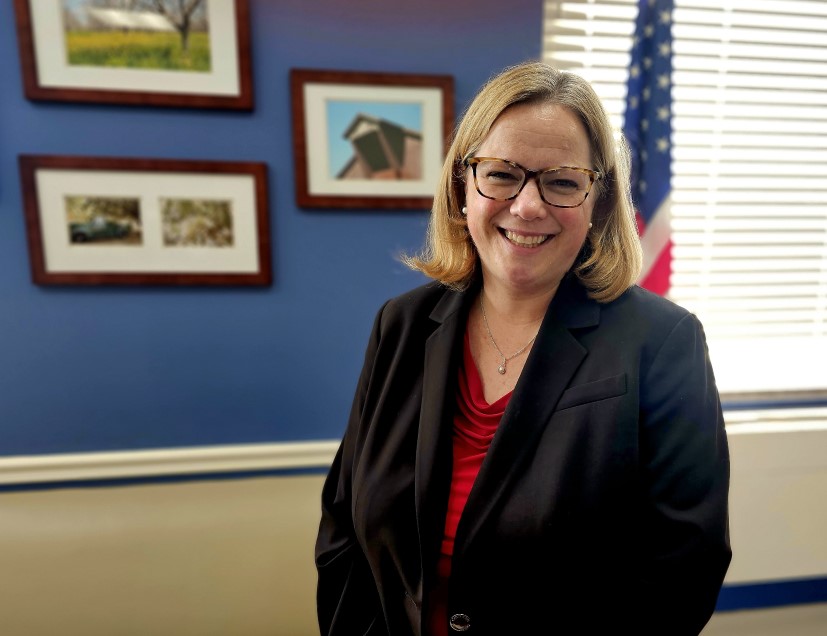Organic industry leaders are hoping the popularity of the Biden administration's transition assistance for new producers entering the sector will encourage lawmakers to put even more funding into such efforts.
Organic Trade Association CEO Tom Chapman said the administration's initiative is helping expand a sector that has traditionally received little government assistance by comparison to conventional agriculture, even though organic makes up 6% of total food sales.
The $300 million Organic Transition Initiative unveiled in August 2022 was designed to not only create a network of support for new organic producers but also to build consumer demand to support the increase in supply. According to a December 2022 USDA report, the total number of certified organic farms increased 5% between 2019 and 2021, but the acreage in transition to organic production on those farms dropped 23%. Organic production practices, which enable a marketing premium, are implemented on about five million acres out of 893 million acres of U.S. farmland, according to USDA.
Adam Warthesen, director of government and industry affairs at Organic Valley and the vice president of OTA's board, said the initiative is made up of three components that depend upon each other. Producers in transition can receive technical assistance through the Transition to Organic Partnership Program (TOPP). Growers can receive conservation and risk management assistance with the Transitional Organic Growers Assistance Program (TOGA) to provide premium assistance for crop insurance. Market development assistance is offered to the industry in the Organic Market Development Grant Program.
 USDA Undersecretary Jenny Lester Moffitt
USDA Undersecretary Jenny Lester MoffittJenny Lester Moffitt, who oversees OTI, knows firsthand how complicated it is to enter the organic market, which brings additional impetus to her role as USDA’s undersecretary for marketing and regulatory affairs.
Moffitt sees the current inflow of money into the organic industry as an important opportunity for Congress to decide if the sector should receive additional funding moving forward. The initiative offers an on-the-ground five-year pilot testing for farm bill proposals from the organic industry, including codifying and increasing assistance through the Organic Market Development Act introduced earlier this fall by Sen. Tammy Baldwin, D-Wis.
Moffitt joined USDA in August 2021 after the $300 million initiative was announced. She quickly convened listening sessions to hear what was needed for the organic industry to grow and how the funding could meet the sector's greatest needs.
The industry laid out several priorities during those discussions: Market development support; access to the expertise offered through USDA's Natural Resources Conservation Service, and funding through the Environmental Quality Incentives Program; and new risk management options, including organic crop insurance through USDA's Risk Management Agency.
“We needed to grow organic farmers, but we needed to not do it in a vacuum,” Moffitt said in an interview with Agri-Pulse.
Moffitt’s experience with USDA goes back to the 1980s when her father converted her family's California walnut farm to organic. When she was just 12, she spent her winter break working with USDA’s Foreign Agricultural Service to identify a market for their crop, which she helped box by hand and ship to Japan. NRCS was an important partner for her dad when he was converting practices and also when she was in charge of the production side of her family’s farm for 10 years.
“The journey for him converting to organic is a lot because of the organic community and learning from fellow farmers and getting mentored by farmers, but also the partnership and resources from USDA,” Moffitt said.
Organic farmers still rely on mentors as they transition production and marketing to organic practices. OTA’s Chapman said mentorship has been a feature of the organic industry to make up for a lack of transition support from USDA in the past.
TOPP is providing $100 million over the next five years in cooperative agreements with organizations that can offer mentoring connections with organic farmers, technical assistance, and workshops and field days. The TOPP partnership network covers six regions with different organizations taking the lead to help connect mentors with farmers transitioning into organic production.
Since the launch of TOPP, more than 100 events have been held nationwide, Chapman said.
Ben Bowell, deputy director of education and advocacy at the northwest regional partnership lead, Oregon Tilth, can now offer mentors in the region $3,000 for four years of their expertise, covering the three years of transition and the first year of certification.
Oregon Tilth is now building a pool of potential mentors to match with interested transitional farmers who are geographically close to them and raise similar organic crops or livestock.
Wayne Steenson, who is transitioning his Oregon hazelnut operation to organic production, is matched with mentor Bruce Kaser. Kaser offers him a helpline and technical support, Steenson said.
“We have the ability over time to really dig deep into the issues and talk on a more profound level about the issues and problems I might face,” Steenson said.
Kaser returned to his family farm 20 years ago but didn’t transition to organic until five years ago. Through the mentorship, he offers Steenson insight into the many differentiated production practices and equipment needs that can help meet the requirements of organic.
Kaser recognizes there are “tremendous challenges and tremendous opportunities” in expanding Oregon’s organic hazelnut production. He’s optimistic about the future, in part because of the connections made between farmers and the efforts to advance the Oregon organic hazelnut brand.
Nate Powell-Palm, an organic beef producer in Montana, believes his entire 12-year span as a certified organic producer has a lot to do with luck.
It’s easy to be “in the know” about what’s happening in Washington, D.C. Sign up for a FREE month of Agri-Pulse news! Simply click here.
“Lucky that I found mentors who wanted to help me, lucky that I lived in a place with a thriving organic scene, lucky that I was able to find markets that allowed me to build this business,” he told Agri-Pulse.
He sees TOPP as a way to take luck out of the equation for those looking to get into organic and still achieve those same opportunities. The money helped build out lists of who’s willing to serve as a mentor, and the organizations can pay the mentors for their time.
 Tom Chapman, OTA
Tom Chapman, OTAOTA's Chapman also said the initiative’s Organic Marketing Grant Program is equally as important to drive the future success of organic production growth.
“If you grow a bunch of feed grains in the Midwest, but there’s no investment in the supply chain infrastructure to process that from farm product into feed grains itself, it’s all going to fall apart,” he said.
Moffitt said there was close to $218 million in requests for the $75 million offering in the marketing program. The bulk of the funding requests, $117 million, is for expanding processing capacity; another $88 million in requests sought money for market development. The remaining $13 million was targeted toward promotion and individual equipment.
Moffitt said USDA is moving as quickly as possible to evaluate those grant proposals, but decisions likely won’t be made until early 2024. She said the money will be based on need and not equally between the three buckets, and the high level of requests for the processing expansion was anticipated because of the higher costs for many of those projects.
Chapman said he’s confident once USDA awards the marketing grants and the industry sees the impact, it will be easier to make the case to Congress on how important that program is as well. Warthesen said the staggering demand for the grants already proves the need for more resources.
Baldwin’s bill codifies the Organic Market Development Grants, with the industry aiming for inclusion in the farm bill.
“Organics are going to put their best foot forward and argue that it deserves its fair share based on the benefits it brings to the economy, farmers and to the marketplace,” Chapman said. “This is more about onshoring these benefits versus seeing all the amazing market benefits and allowing them to seep offshore.”
For more news, visit www.Agri-Pulse.com.


